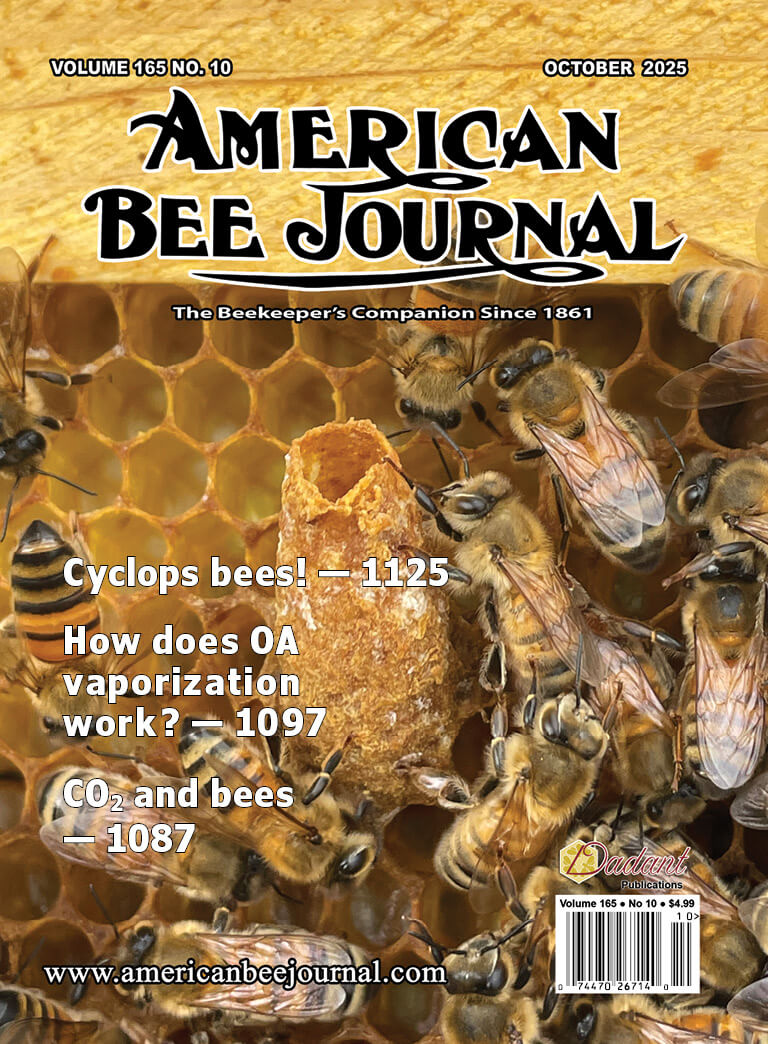Archived Columns
Winter Thermoregulation in the Honey Bee Superorganism
With last month’s column we reached a significant milestone in our evolutionary history of the honey bee – the point at which queens and workers have diverged in form and function to the point that each can no longer perform the functions of the other. The queen can’t survive without the workers and the workers can’t survive without the queen. Neither is any longer reproductively autonomous. At this point we can now ask, What is the unit of selection? – the individuals in the colony or the colony as a whole? – and I explained how many of the things we observe in honey bees can only be understood as outcomes of natural selection on the colony – the kinds of things we normally associate with organisms. A handy word for labeling this level of biological organization is superorganism.
Often referred to as “group selection” or “group adaptation,” the superorganism concept is fascinating because scientists can see in the teeming members of social insect colonies, their webs of feedback loops, and their emergent properties clues to the evolution of organisms such as ourselves and the teeming cells of our bodies, their webs of feedback loops, and their emergent properties. Indeed, it is possible to make metaphors between superorganisms and organisms – keeping in mind that these are just metaphors, not suggestions of any shared evolutionary pathway; they are teaching tools for understanding how evolution can solve similar problems from different starting points and for understanding how a superorganism can stand alone as a unit of selection.
Books are devoted to the information summarized in this table, but for our purposes this month I’m focusing on just one of these features – how the honey bee superorganism regulates its winter nest temperature.
First, a primer on terms: an organism whose body temperature is more or less dependent on ambient conditions is called cold-blooded or poikilothermic (poikilos in Greek = “changing”), whereas an organism capable of maintaining its core temperature across a range of conditions is called warm-blooded or homeothermic (homois = same). Other terms can refine special conditions or where that heat comes from: a heterothermic animal can go from an unregulated (cold-blooded) state to a regulated (warm-blooded) state as activity requires; an ectothermic animal gets its heat from external sources – like a turtle basking in the sun, and an endothermic animal gets its heat from internal sources – like shivering muscles. In truth, most animals move across these categories with a fluidity that defies labels, none more so than the honey bee which at the level of individual is a cold-blooded ectotherm which nevertheless shivers, making it an endotherm, and which at the level of superorganism is an outright homeotherm. So much for terms. And in that earlier sentence you can also see where our story has landed us – the need to clarify which level of natural selection we’re talking about.
The ancestor of our honey bee was already a superorganism by the time it began migrating out of south Asia about 1 million years ago.1 The most primitive members of the genus Apis built single exposed combs (Fig. 1) – as do modern species of Apis in Asia today: A. dorsata, A. binghami, A. laboriosa, A. andreniformis, and A. florea. Some ancient Apis, however, adapted to the novelty of nesting inside cavities – as do the modern species A. cerana, A. koschevnikovi, A. nuluensis, A. nigrocincta, and of course our own A. mellifera. It seems then no great surprise that it was cavity-nesting Apis that expanded out of the tropics westward and northward and eventually gave rise to our modern honey bee A. mellifera. In other words, cavity nesting was a pre-adaptation for temperate zones and cold-weather thermoregulation. By the time A. mellifera successfully pioneered the cold latitudes of Europe it had evolved behavioral adaptations beyond simple nest choice to render it as homeothermic and cold-tolerant as the fire-wielding hominids it encountered along the way.
It is a well-known observation that bees assume a clustering configuration in …


